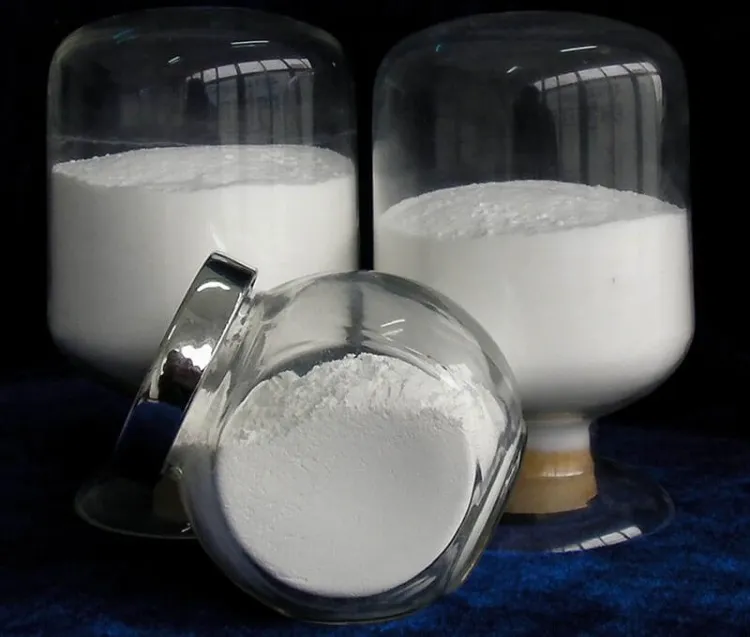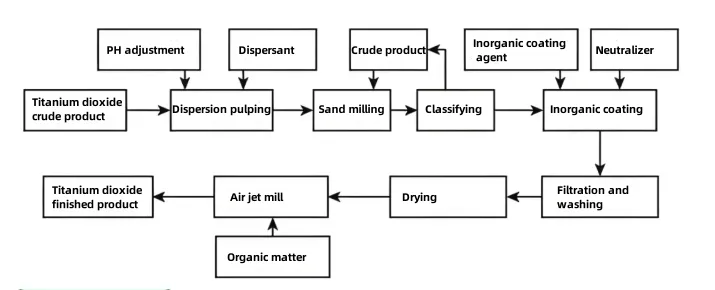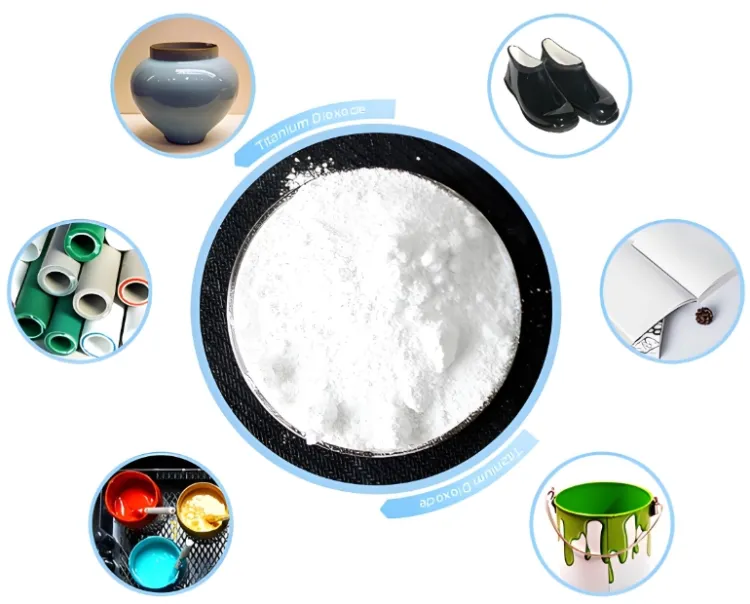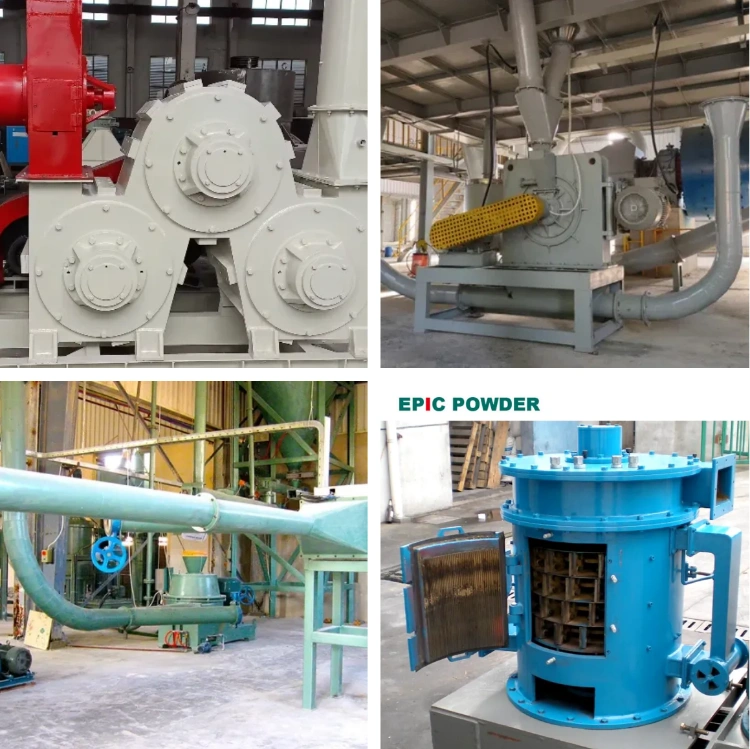De coatingmodificatie van titaandioxide (TiO₂) is een belangrijke methode om de eigenschappen ervan te verbeteren, zoals dispersie, weersbestendigheid, glans en chemisch stabiliteit. Door middel van titaniumdioxide bekleding Door modificatie kunnen de prestaties van TiO₂ aanzienlijk worden verbeterd voor diverse industriële toepassingen. Gangbare coatingmethoden worden hoofdzakelijk onderverdeeld in drie categorieën: anorganische coating, organische coating en composietcoating. Hieronder vindt u een specifieke classificatie en een korte introductie van deze methoden voor titaandioxidecoatingmodificatie, met een toelichting op hun unieke voordelen voor diverse toepassingen.

Modificatie van anorganische coatings
Door bekleding een laag van anorganische oxiden of zouten op het oppervlak van titaniumdioxidedeeltjes. Er wordt een fysieke barrière gevormd om de chemische stabiliteit en optische eigenschappen te verbeteren.

Oxidecoating
Beginsel: Metaaloxidehydraten (bijv. SiO₂, Al₂O₃, ZrO₂) slaan neer op het TiO₂-oppervlak en vormen een uniforme coatinglaag.
Veel voorkomende typen:
- Silica (SiO₂) coating: Verbetert de dispersie- en weersbestendigheid, vermindert agglomeratie, wordt gebruikt in coatings en kunststoffen.
- Alumina (Al₂O₃) coating: Verbetert de oppervlaktepolariteit, verbetert de compatibiliteit met organische matrices, verhoogt de glans en chemische bestendigheid.
- Zirkonia (ZrO₂) coating: Verbetert de weerstand tegen hoge temperaturen en slijtage, geschikt voor hoogwaardige coatings en keramiek.
Proces: Metaalzouten (bijvoorbeeld natriumsilicaat, aluminiumsulfaat) worden toegevoegd aan de TiO₂-suspensie, waarbij de pH wordt aangepast om metaaloxidehydraten te laten neerslaan.
Samengestelde oxidecoating
Beginsel: Door het coaten met twee of meer metaaloxiden (bijvoorbeeld Al₂O₃-SiO₂, ZrO₂-SiO₂) worden de voordelen van elke component gecombineerd.
Kenmerken: Biedt superieure algehele prestaties. Zo verbetert Al₂O₃-SiO₂-coating zowel de dispersie als de weersbestendigheid, geschikt voor hoogwaardige autolakken en coilcoatings.
Zoutcoating
Beginsel: Metaalzouten (bijvoorbeeld fosfaten, silicaten, sulfaten) vormen onoplosbare zoutlagen op het TiO₂-oppervlak.
Veel voorkomende typen:
- Aluminiumfosfaatcoating: Verbetert de weersbestendigheid en het antipoedereffect, veelgebruikt in buitencoatings.
- Zinksulfaatcoating: Verbetert de oppervlakteladingseigenschappen, vermindert agglomeratie en bevordert de dispersie.
Modificatie van organische coatings
Door de reactie van organische verbindingen met de hydroxylgroepen op het oppervlak van titaandioxide wordt een organische moleculaire laag gevormd, waardoor de compatibiliteit met organische media wordt verbeterd.
Koppelingsmiddel coating
Beginsel: Koppelingsmiddelmoleculen (bijv. silanen, titanaten, aluminaten) hebben een amfifiele structuur, waarbij het ene uiteinde zich bindt aan TiO₂-hydroxylgroepen en het andere uiteinde reageert met organische matrices (bijv. harsen, polymeren).
Functie:
- Silane-koppelingsmiddelen: Verbeter de dispersie van TiO₂ in waterige systemen, veelgebruikt in coatings en inkten op waterbasis.
- Titanaat/Aluminaat koppelingsmiddelen: Verbeter de compatibiliteit in olieachtige systemen zoals kunststoffen en rubbers, waardoor agglomeratie tijdens de verwerking wordt verminderd.
Oppervlakteactieve coating
Beginsel: Oppervlakteactieve stoffen (bijvoorbeeld vetzuren, sulfonaten, quaternaire ammoniumzouten) hechten zich aan het TiO₂-oppervlak door middel van fysieke adsorptie of chemische reacties, waardoor een lading of hydrofobe laag ontstaat.
Functie:
- Anionische oppervlakteactieve stoffen (bijv. stearinezuur): Verbetert de dispersie in olieachtige media, veelgebruikt in kunststoffen en rubber.
- Kationische oppervlakteactieve stoffen (bijv. dodecyltrimethylammoniumchloride): Geschikt voor poolsystemen, voor een betere stabiliteit.
Polymeercoating
Beginsel: Enting van polymeren (bijvoorbeeld acrylaten, epoxyharsen, siloxanen) wordt bereikt door polymerisatiereacties op het TiO₂-oppervlak.
Functie: Vormt een dikke coatinglaag die chemische corrosie verder isoleert, de weersbestendigheid en mechanische eigenschappen verbetert. Verbetert de compatibiliteit met specifieke harsen en is geschikt voor hoogwaardige composieten en coatings.
Siliconen coating
Beginsel: Polyorganosiloxanen (bijvoorbeeld siliconen, siliconenharsen) bedekken TiO₂-deeltjes vanwege hun lage oppervlakte-energie-eigenschappen.
Functie: Vermindert de oppervlaktespanning, verbetert de dispersie en gladheid, veelgebruikt in inkt en cosmetica.
Modificatie van composietcoating
Door de voordelen van anorganische en organische coatings te combineren, wordt dubbele coating in fasen of gelijktijdig uitgevoerd om aanvullende prestaties te bereiken.
Eerst anorganische, dan organische coating
Proces: Vorm eerst een fysieke barrière met anorganische oxiden (bijv. SiO₂) en pas deze vervolgens aan met koppelmiddelen of polymeren voor organische verbetering.
Kenmerken: Zorgt voor een evenwicht tussen weersbestendigheid en compatibiliteit, zoals in weerbestendige architecturale coatings of OEM-autolakken.
Anorganisch-organische synchrone coating
Proces: Tegelijkertijd anorganische en organische coatings in hetzelfde reactiesysteem introduceren om een kern-schilstructuur te vormen.
Kenmerken: De coatinglagen hechten sterker, wat leidt tot aanzienlijke prestatieverbeteringen. Geschikt voor hoogwaardige toepassingen, zoals coatings in de lucht- en ruimtevaart en nanocomposieten.
Andere speciale coatingtechnologieën
Nanocoating
Beginsel: Gebruik nanomaterialen (bijv. nano-SiO₂, nano-ZnO) voor coatings om de bescherming tegen UV-straling te verbeteren en de transparantie te vergroten. Deze worden vaak gebruikt in zonnebrandcosmetica en optische coatings.
Microcapsule coating
Beginsel: Omhul TiO₂-deeltjes in polymeermicrocapsules, waardoor TiO₂ vrijkomt door de scheuromstandigheden van de capsule te reguleren (bijv. temperatuur, pH). Geschikt voor slimme coatings en systemen met gecontroleerde afgifte.
Conclusie
De keuze van modificatie van titaniumdioxidecoating moet gebaseerd zijn op het toepassingsscenario (bijv. coatings, kunststoffen, inkten, cosmetica) en prestatie-eisen (bijv. weersbestendigheid, dispersie, compatibiliteit).

Bijvoorbeeld:
- Buitencoatings: Om de weersbestendigheid te verbeteren, hebben anorganische oxiden (bijvoorbeeld Al₂O₃-SiO₂) of composietcoatings de voorkeur.
- Kunststofverwerking: Koppelingsmiddelen of oppervlakteactieve stoffen worden gebruikt om de dispersie- en verwerkingsprestaties te verbeteren.
- Hoogwaardige toepassingen: Composiet- of nanocoatings maken multifunctionele synergetische optimalisatie mogelijk.

Episch poeder
Epic Powder, meer dan 20 jaar werkervaring in de ultrafijne poederindustrie. We promoten actief de toekomstige ontwikkeling van ultrafijn poeder, met een focus op het breken, malen, classificeren en modificeren van ultrafijn poeder. Neem contact met ons op voor een gratis consult en oplossingen op maat! Ons deskundige team streeft ernaar hoogwaardige producten en diensten te leveren om de waarde van uw poederverwerking te maximaliseren. Epic Powder - uw vertrouwde expert in poederverwerking!
